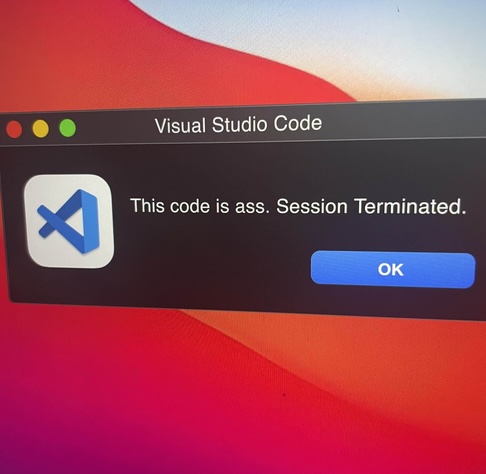
This actually hasn’t happened…yet. But there are enough people who practice asshole-driven development for there to eventually be an AI code assistant that behaves like this.

This actually hasn’t happened…yet. But there are enough people who practice asshole-driven development for there to eventually be an AI code assistant that behaves like this.
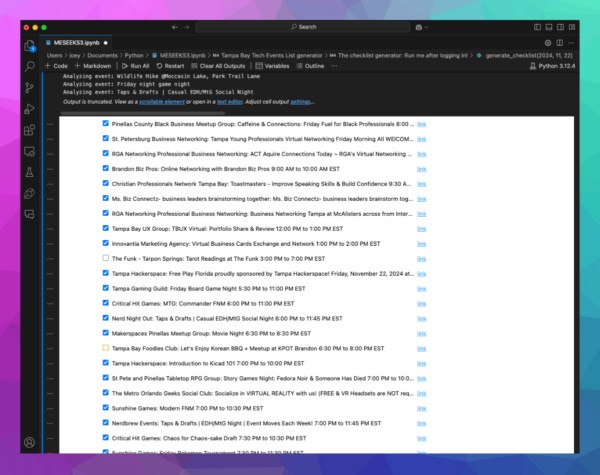
Since March 13, 2017, I’ve posted a weekly list of tech, entrepreneur, and nerd events happening in Tampa Bay and surrounding areas. I’ve continued to do this to this day, with me typically assembling the list on Thursday and posting it on Friday.
Today is Thursday, so I’m assembling the list — or more accurately, a Jupyter notebook running some Python code I wrote is scraping various sites and creating a checklist like the one you see in the screenshot above.
Back when I first started the list, I used to put it together manually, but as Tampa Bay’s tech scene and events grew, so did the list. It wasn’t long before assembling the list was eating up the better part of an afternoon, and that’s when I decided to add some automation to the process.
The checklist contains likely candidates for inclusion in the list, and each item in the list is checked by default. The checklist is there to allow me to apply my final judgement as to what goes and doesn’t go into the list.
There’s a hug “deny” list of key words and phrases that cause an event to not make it into the checklist because it doesn’t fall under the umbrella of “tech, entrepreneur, or nerd.” For example, events with the words “real estate” don’t make it into the list — they often contain the word “developer,” which my code is looking for, but that’s not the right kind of developer event for the list.
Would any of you be curious as to what’s in my tech events list-creating code and how it works? Would you like me to do a presentation at a local meetup or on YouTube explaining how it works? Let me know.
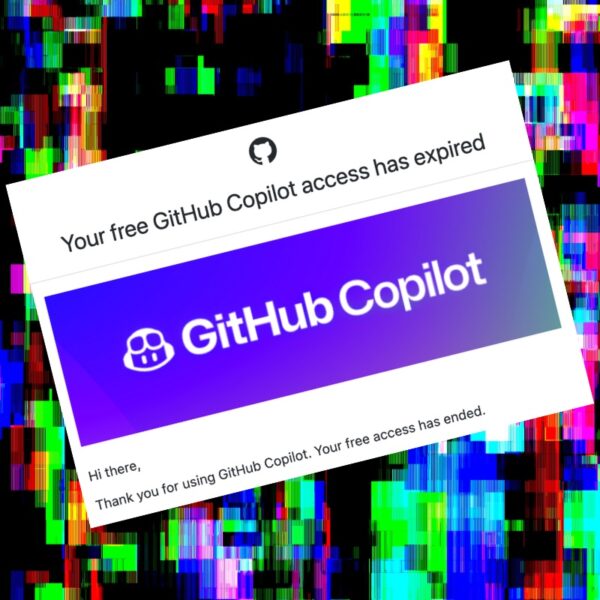
There aren’t that many free trials that manage to convert me into a paying customer, but GitHub Copilot is now one of the exceptions. I don’t think I’ve seen a programming add-on tool that’s been this useful or beloved by developers since…well, maybe ReSharper back during my time as a Microsoftie (2008 – 2011).
It’s pretty good — but far from perfect — at generating Python code I’m thinking of writing as I type it in, which has resulted in a speed boost for me. Between Copilot (which I’ve had for free for a bit) and Claude Sonnet (which I’ve been paying for), I’ve been enjoying the new assisted world that I’ve been coding in.
Your mileage will vary with the programming language you’re using and the sort of application you’re working on. If what you’re doing matches lots of examples in Copilot’s training set, you’ll get lots of good suggestions. However, if you’re coding in a more obscure programming language, or writing a kind of application for which there would’ve been few examples to add to Copilot’s training set, you’ll get fewer suggestions, and a good number of them will be wrong.
But for me, Copilot’s a very helpful programming tool that I’ve harnessed in order to do more. Pardon me while I go pull out Atypical Consulting LLC’s credit card…

I was pointing someone to the Amazon page for the book I co-wrote a little while back — iOS Apprentice, Eighth Edition — and I saw what you’re seeing in the screenshot above.
I like to think of my technical writing as sexy, but I didn’t think it was this sexy!
In case you’re curious, here’s what the actual cover looks like:
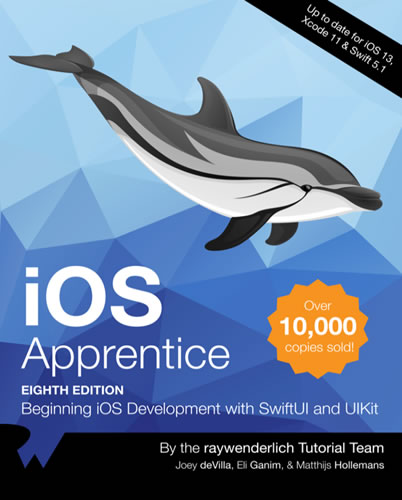
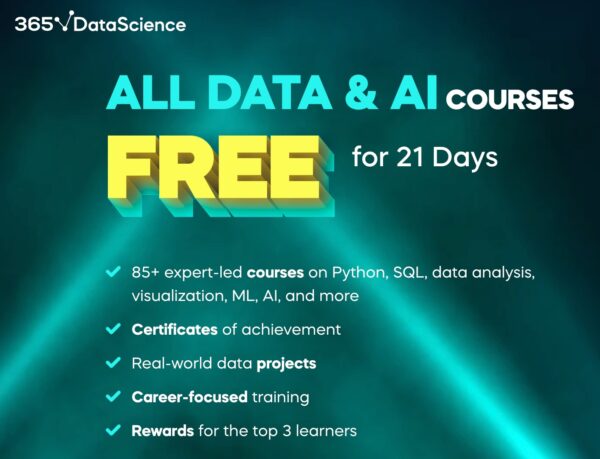 If you can carve out a little free time every day between now and November 21st, you’ve got the opportunity to take every data science and AI course offered by 365 Data Science for free — and really free, as in they won’t ask you to enter your credit card number.
If you can carve out a little free time every day between now and November 21st, you’ve got the opportunity to take every data science and AI course offered by 365 Data Science for free — and really free, as in they won’t ask you to enter your credit card number.
I’m quite sure that the hope is that you’ll start some courses, not be able to finish them by the 21st, and then shell out money to continue. They may even have some Black Friday specials happening around that time to entice you to hand over your credit card number.
But what if you put in the time during the free period and really dug in? You might be able to learn a lot of free.
I’m in the middle of a couple of their math courses, and they’re pretty good. Check them out!
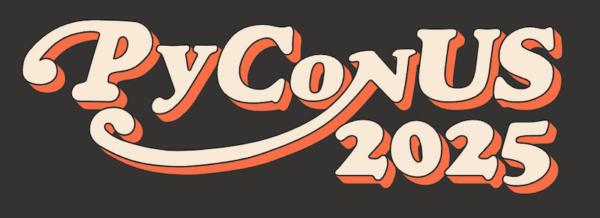 PyCon US 2025 — the big Python conference — is taking place at the David L. Lawrence Convention Center in Pittsburgh, Pennsylvania, on the following dates from Wednesday, May 14 through Thursday, May 22, 2025!
PyCon US 2025 — the big Python conference — is taking place at the David L. Lawrence Convention Center in Pittsburgh, Pennsylvania, on the following dates from Wednesday, May 14 through Thursday, May 22, 2025!
Here’s the breakdown of that schedule:
| Dates | What’s happening |
|---|---|
| Wednesday, May 14 – Thursday, May 15 | Tutorials |
| Thursday, May 15 | Sponsor Presentations |
| Friday, May 16 – Sunday, May, 18 | Main Conference Days—Keynotes, Talks, Charlas, Expo Hall, and more |
| Monday, May 19 – Thursday, May 22 | Sprints |
The PyCon US 2025 site is now live, and the call for proposals is officially open! You can submit proposals for:
The deadline to submit proposals all tracks is Thursday, December 19, 2024 at 11:59 PM ET (UTC-5). They’ve set up a “Call for Proposals Countdown” so you can view how much time you have left to submit, and see what the deadline is in your local timezone. You can find out more about proposals on their Proposal Guidelines page.
You can also find out more about the conference in the announcement post on the PyCon US blog.